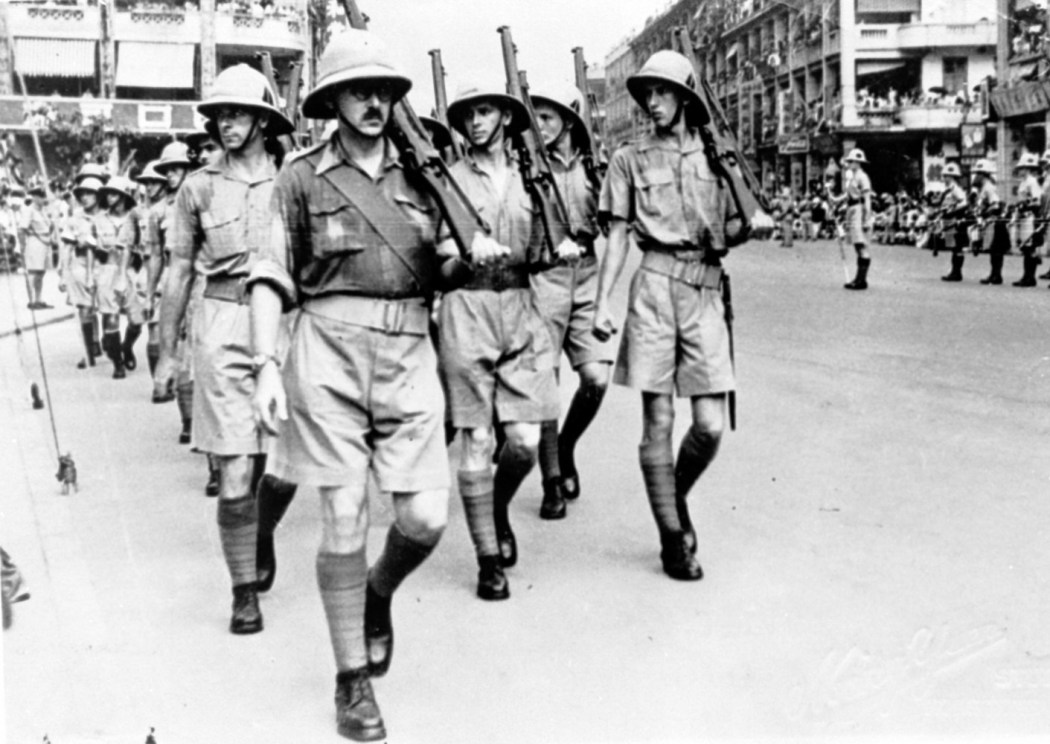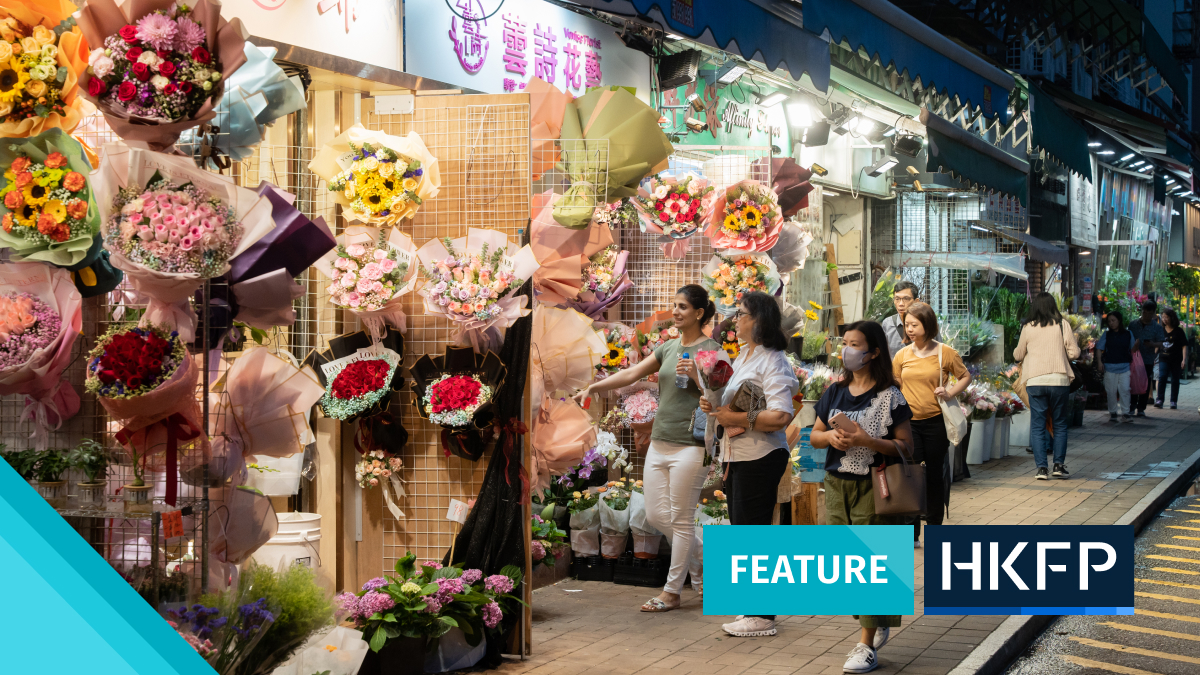Gleion Shing and Alex Wong met online years ago, developing a friendship through a history-themed video game and eventually taking their discussions on Hong Kong history to a Facebook forum.
Earlier this year, they found something that would set them on a journey of discovery towards a lesser-known chapter of the city’s history. It began when Alex stumbled across a unique but unassuming structure hidden in plain sight in the Hong Kong Zoological and Botanical Gardens.

It looked like the remains of a monument; all that was left was a base, with little else to indicate its provenance or historical significance. But Alex and Gleion suspected it may be a long-forgotten link to Hong Kong’s wartime history, when the city was occupied by Japanese forces.
A dark history
During a trip to Japan in 2017, Gleion had learned of Shinto shrines erected in Hong Kong during the occupation, which lasted from December 1941 until August 1945.

Tokyo’s Yasukuni Shrine hosts a permanent exhibition about Japan’s conquest of Asia during World War II. There is information about its wartime footprint in Hong Kong, including a plaque from a Shinto shrine known as Nankai Jinja, which was once sited in what is now Admiralty district.
The shrines were built as a tribute to the Japanese lost during the fierce fighting of the Battle of Hong Kong. The defending garrison, composed of the Hong Kong Volunteer Defence Corps – which later became the Royal Hong Kong Regiment – and reinforcements from across the British Empire, put up stiff resistance for 16 days until finally laying down their arms in Stanley on Christmas Day.
At least two shrines were built while Hong Kong was under occupation. One of them, the Hong Kong Shrine, was erected around the Botanical Gardens. The other, the Nankai Shrine, was built in Victoria Barracks, today’s Admiralty.

Victoria Barracks resumed its role as the British garrison headquarters after the war, but the shrine’s entrance plaque was left untouched. Upon the barracks’ closure and demolition in 1979, the government offered to return the plaque to Japan, where it is now displayed at the Yasukuni Shrine.
The occupiers also built a towering cenotaph or war memorial, the Tower of the Loyal Spirits, at what is now Bowen Hill in The Peak area. It was intended to symbolise dominance over the newly-conquered city and designed to be an imposing landmark.
The granite cenotaph, which was 80 metres high and weighed 900 tons, was commissioned by the then-governor Hisakazu Tanaka and the foundations were laid on February 9, 1942. A Japanese sword buried during the ceremony has never been recovered.

The Hong Kong Shrine and the Tower of Loyal Spirits were mentioned in the occupying government’s 1944 yearbook, along with a foreword written by the governor Rensuke Isogai praising his homeland’s imperial exploits.
After Japan’s defeat, the cenotaph was destroyed by the British colonial government in February 1947, and only its foundations remained. An upscale apartment building was built on the site in 1951.
Connected by the past
These stories have inspired many amateur historians, while history-related websites such as Gwulo have dug deep into Hong Kong’s wartime past.
![A webpage about Japanese War Memorial [1943-1947] at Gwulo on December 20, 2023. Photo: Gwulo.](https://hongkongfp.com/wp-content/uploads/2023/12/hkfp_2023-12-20_14-37-47-Copy-1050x550.jpg)
Godfrey, a research assistant at the Chinese University of Hong Kong and a co-founder of history blog We Toast HK, told HKFP that his team was working to rediscover the city’s hidden history.
“We like to make things less academic and dry and tend to bring history to all corners of society as something down-to-earth and digestible,” Godfrey said.
Godfrey’s curiosity about the shrines increased when his team produced a video about the Botanical Gardens. He was unaware it was the site of a former shrine until reading comments left by some history buffs.

“Places like parks are somewhere we all can access as individuals and families, so it’s meaningful to discover the stories we can touch and feel; that’s why we did it,” Godfrey said.
“It wasn’t a massive discovery per se since the shrine saga had always been around, so it’s more about knowing that a structure of that sort used to sit in this area… we want to bring out the uniqueness of these sites and see history around us when living in the city.”
Hong Kong’s wartime history is intertwined with that of Britain and Japan. There is increasing interest from overseas universities, such as the University of Bristol and the University of California.
“History transcends boundaries,” Godfrey said. “That’s why Hong Kong’s history won’t be just under one voice; too many people are doing this subject. Its uniqueness is that it’s tied with parts of British or Japanese history, so realistically, it’s hard to control a narrative.”
“The Nankai Shrine’s plaque was already in Japan’s Yasukuni Shrine, so there’s already a record in Japan.”
Taking rediscovery in one’s own hands
Taurus Yip recalls going to Japan in 2014 for an exchange semester and visiting the Yasukuni Shrine, where he saw the exhibit that captivated him: the original plaque from the Nankai Shrine that remained in Hong Kong until the late 1970s.
“Hongkongers love visiting Japan; some may check out shrines. But we never knew shrines were at our city’s heart during WWII. Though it’s hard to find concrete photos or relics, it’s an interesting fragment of history and something unexpected,” he said.

Taurus, who runs the history enthusiasts’ blog Watershed, says talking about his discovery online helped stimulate interest in the subject.
One of his posts featured a photo of the Tower of the Loyal Spirits taken in August 1945, showing the formidable structure overlooking Victoria Harbour as a Royal Navy warship sails back to the city after Japan’s defeat.
After decades of dramatic urban development, tangible evidence of the occupation era is scarce.
“We may have seen some pictures and wartime ration coupons, but a picture of a huge formidable memorial facing right at the harbour or seeing a plaque overseas shows that the invaders did make a permanent historic mark and gives a physical substance to history… it drove me to start digging for more,” said Taurus.

Fascinated by the era but lacking training and resources, Alex and Gleion turned to the internet. Gleion purchased a series of historical aerial photos from the government news outlet and the two began to compile these images and cross-check online resources like www.hkmaps.hk.
“Nowadays, maps, geographical information or even satellite images are within reach thanks to technology… we can witness how war-torn Hong Kong was revived in the 1940s,” the duo told HKFP via instant messenger. “We want to make things relevant to the public, to bring history to life. ”
A report by the University of Hong Kong, dated 1946, provided some hints which the pair believed matched their findings. It recorded the colonial government’s dismay about the Botanical Gardens’ post-war condition. The report noted that the Japanese had left “large, unfinished walls” in the area – vaguely corresponding to where the shrine would have been.
“What we found has proven that these historical sites once existed. It’s like we opened a file, and others will add their information,” the pair said. “If we are to give it a meaning, it’ll be that we’re filling in a piece of the puzzle, even if it is a dark and dishonourable episode.”
Safeguarding a narrative
The preservation of history and narratives has become a contentious issue lately.
The Hong Kong government this month revealed plans to build a new museum celebrating China’s “grand development and achievements” on Tsim Sha Tsui’s Science Museum site. This proposed museum is dedicated to “enhancing the recognition of the Chinese nation and its excellent traditional culture”, according to government documents.

Meanwhile, Chief Executive John Lee has proposed that the Hong Kong Museum of Coastal Defence be “converted” into the Hong Kong Museum of the War of Resistance – presenting China’s battle against Japan before and during the Second World War. The move is intended “to cultivate a stronger sense of national esteem and patriotism” and instil China’s historical narrative in the city’s memory.
History buffs believe they are racing against time to preserve records in any way they can but are confident they can rely on the public’s increasing interest in the city’s past.
“Different narratives will still live on, but the future for physical relics or sites isn’t so bright. We do what we can and stay positive; that’s all we can do now,” said Alex.
Support HKFP | Policies & Ethics | Error/typo? | Contact Us | Newsletter | Transparency & Annual Report | Apps
Help safeguard press freedom & keep HKFP free for all readers by supporting our team

Original reporting on HKFP is backed by our monthly contributors.
Almost 1,000 monthly donors make HKFP possible. Each contributes an average of HK$200/month to support our award-winning original reporting, keeping the city’s only independent English-language outlet free-to-access for all. Three reasons to join us:
- 🔎 Transparent & efficient: As a non-profit, we are externally audited each year, publishing our income/outgoings annually, as the city’s most transparent news outlet.
- 🔒 Accurate & accountable: Our reporting is governed by a comprehensive Ethics Code. We are 100% independent, and not answerable to any tycoon, mainland owners or shareholders. Check out our latest Annual Report, and help support press freedom.
- 💰 It’s fast, secure & easy: We accept most payment methods – cancel anytime, and receive a free tote bag and pen if you contribute HK$150/month or more.
MORE Original Reporting
HKFP has an impartial stance, transparent funding, and balanced coverage guided by an Ethics Code and Corrections Policy.
Support press freedom & help us surpass 1,000 monthly Patrons: 100% independent, governed by an ethics code & not-for-profit.









